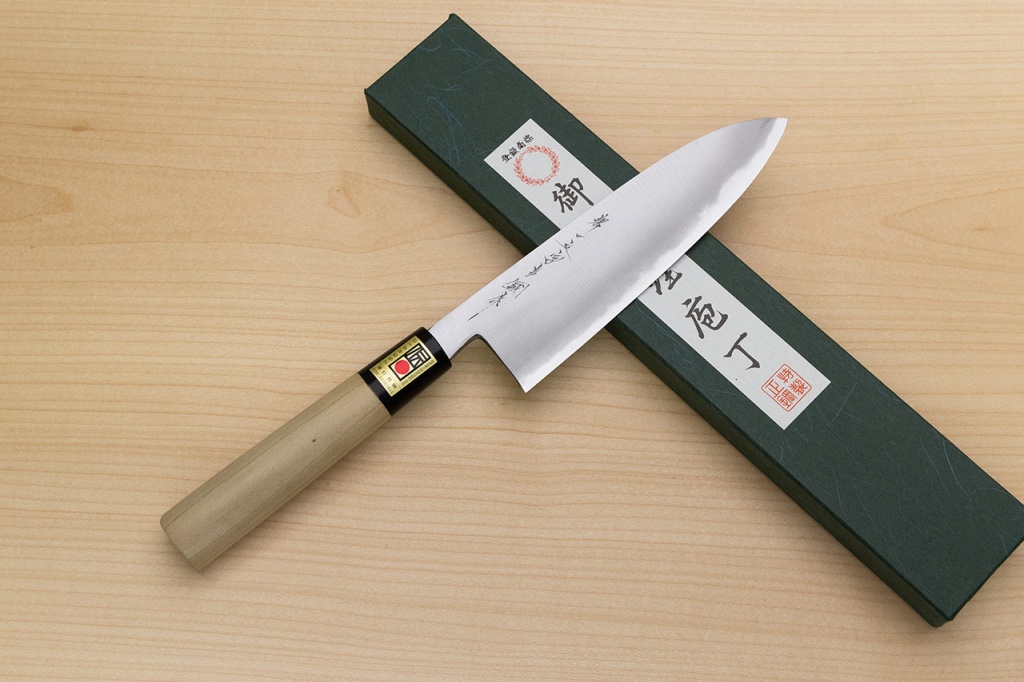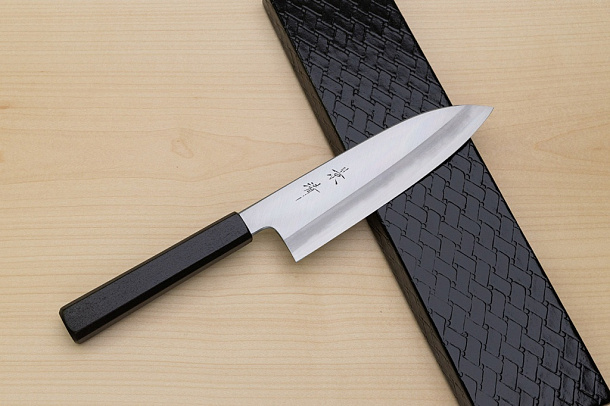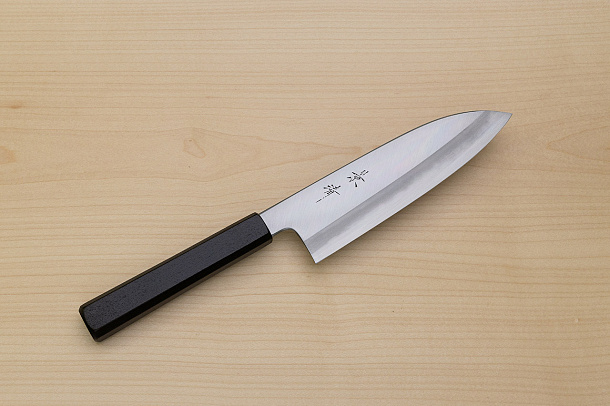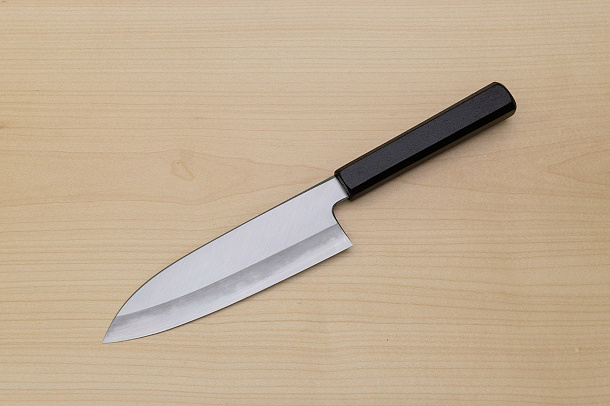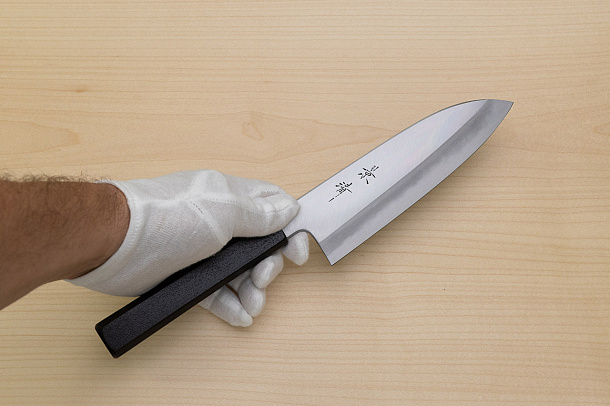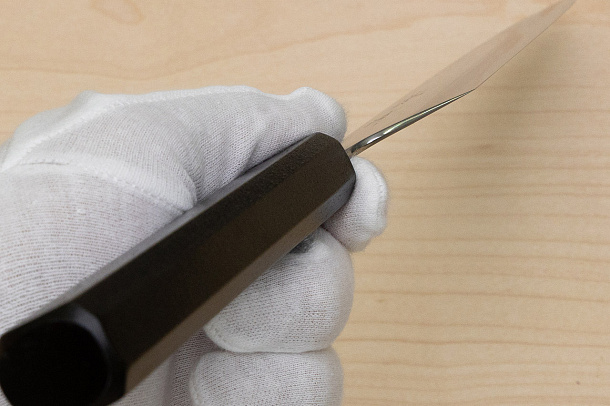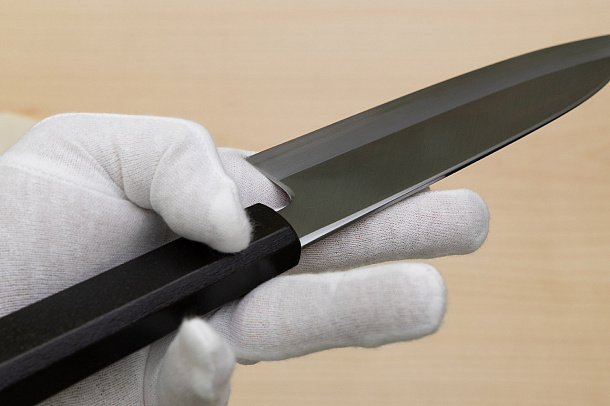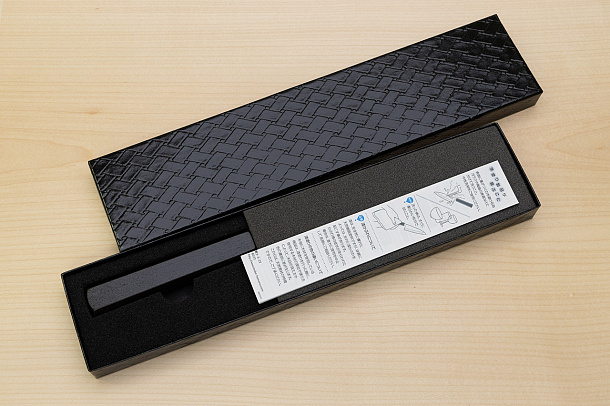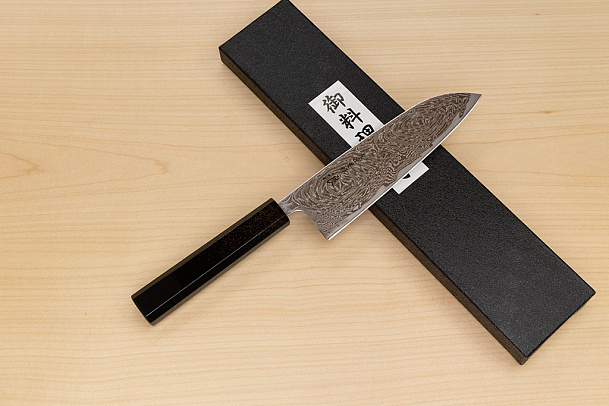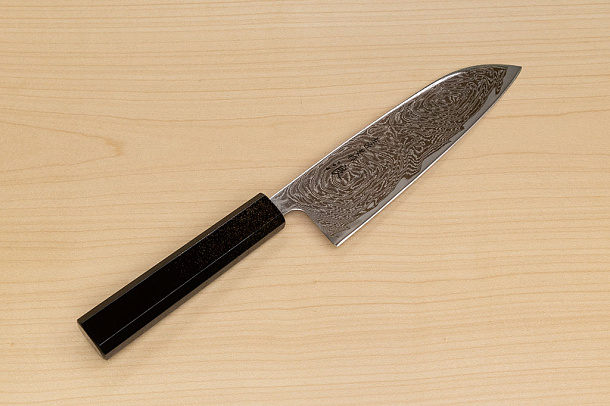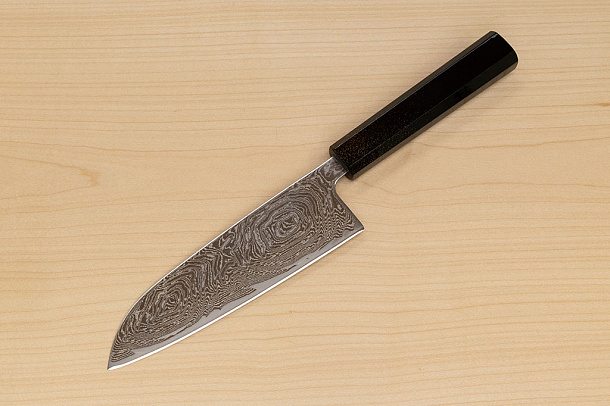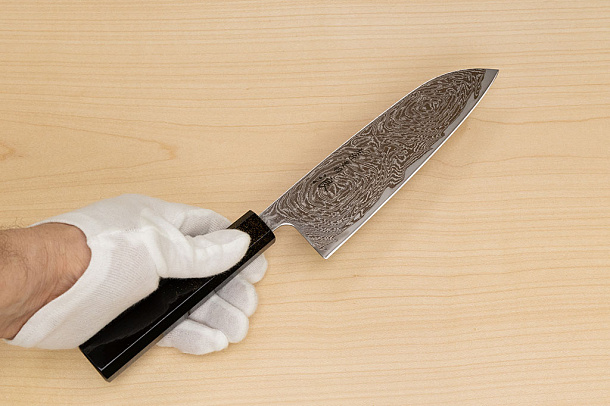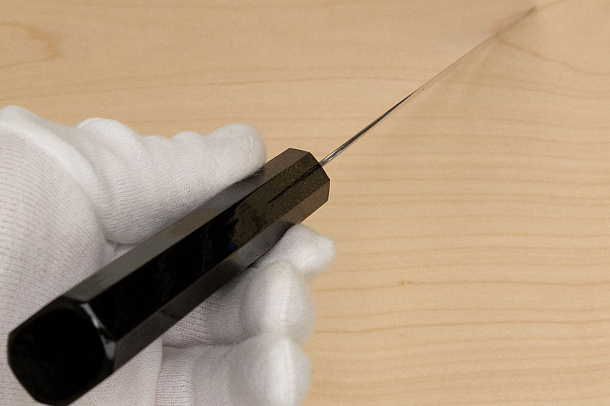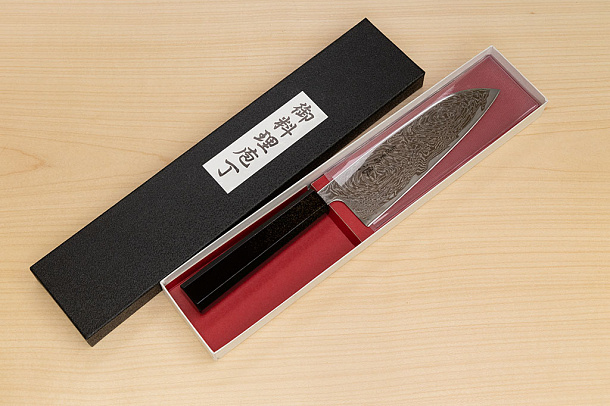Sakai Genkichi White steel 2 Santoku 180 (7.1) Magnolia Wood handle with buffalo horn
This Santoku was made by the Sakai Genkichi company from Sakai city in Osaka Prefecture in Japan.180mm long blade are hand-forged in the Japanese traditional smithing technique called "Warikomi" (Inserted hard steel between softer) using White steel 2 carbon steel as a core. Kasumi finish.
This gorgeous Santoku was made by the Sakai Genkichi company from Sakai city in Osaka Prefecture in Japan.180mm long blade are hand-forged in the Japanese traditional smithing technique called "Warikomi" (Inserted hard steel between softer) using White steel 2 carbon steel as a core. Kasumi finish.The perfect traditional blade shape and White steel 2 guarantee excellent cutting ability and sharpness but low rust resistance. Japanese traditional knife handles are made from Magnolia Wood with a buffalo horn ferrule. To prevent blade corrosion, please wipe the blade to dry after every use. Genkichi Santoku knife is a perfect choice for home "Everyday" cooking and is highly recommended for professionals. Knife packed in premium Japanese authentic gift box with traditional patterns.
Log in to leave a review.
| Knife Type | Santoku |
| Brand |
Sakai Genkichi
|
| Knife Style | Modern Japanese Kniwes |
| Blade Bevel Grind | Double-edged |
| Total Knife Lenth (mm/inch) | 317/12.36 |
| Blade Lenth (mm/inch) | 180/7.1 |
| Blade Height at Base/Heel (mm/inch) | 47/1.8 |
| Blade Thickness above heel (mm/inch) | 3.9/0.15 |
| Blade Thickness above tip (mm/inch) | 2/0.08 |
| Blade Steel / Core steel | White steel 2 |
| Blade Core Hardness | 62-63HRC |
| Blade Construction / Structure | Warikomi / Inserted core steel |
| Blade Cladding Steel | Carbon steel |
| Knife Handle Material | Magnolia/Buffalo horn |
| Handle Bolster | No |
| Handle style | Japanese |
| Total Knife Weight (g/Oz) | 160/5.6 |
| Hand-sharpened | Yes |
| Place of Origin | Sakai Japan |
After use, wash it with a soft sponge, wipe the knife dry and store safely. Avoid cutting the bones, frozen foods, hard fruit pits.
Recommended cutting surface: wood, rubberized boards, and high-end composites, as well as quality plastics such as polyethylene, make acceptable cutting surfaces and will help protect and extend the life of the knife's edge. AVOID using glass, metal, countertops, and other rigid, unyielding surfaces.
We think that sharpening all quality Japanese knives on whetstones produces the finest results for your blades.

